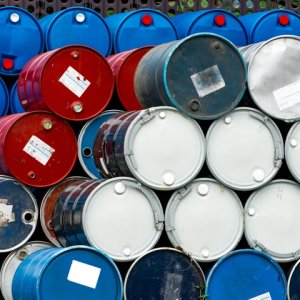
Refining Rises in Mexico, So Does Sulfur Pollution
The rehabilitation of Mexico’s National Refinery System (SNR) has advanced 67 percent increasing its capacity by 17 percent, reports El Economista. But with the increase comes a growing number of pollution complaints.
Past governments allowed the SNR to fall into disrepair. The current MX$25 billion (US$1 billion) rehabilitation has been required for some time. It is taking place at the same time as the construction of the Dos Bocas refinery in Tabasco, which together form part of the administration’s plan to push Mexico towards energy sufficiency by refining all oil inside the country.
Last year, Director of Golfo Suplemento Latino Concepción de la Garza, whose company has provided maintenance to the SNR for over 18 years, told Mexico Business News that “working in the refineries has been complicated over the last two years. The five refineries we are working in are operating at an average of 30 percent capacity. There is no activity at all in Madero nor Minatitlan.”
The 17 percent increase in the SNR’s productive capacity, the highest jump since November 2011, means the system is now functioning at an average of 41 percent nationally.
But the SNR’s increased performance has led to an increase in the production of combustoleo, or fuel oil, a byproduct of petroleum distillation. It has high levels of sulfur dioxide, an air pollutant that is harmful for both humans and the environment. The International Maritime Organization (IMO) says fuel oil contains sulphur oxides responsible for “causing respiratory and lung diseases” and “can lead to acid rain, which can harm crops, forests and aquatic species and contributes to the acidification of the oceans.” This year, the organization began the IMO 2020 regulation to cut the use of fuel oils in the maritime industry.
According to El Economista, this situation has led to more pollution in the regions where the SNR’s refineries are located. In Guanajuato where PEMEX’s Salamanca refinery is located, the refinery has become responsible for 80 percent of the state’s pollution, said Guanajuato’s Environment Minister María Isabel Ortiz Mantilla. In another instance, Senator for the Movimiento Ciudadano party Samuel García Sepúlveda reported PEMEX’s Cadereyta refinery on the outskirts of Monterrey to the National Human Rights Commission and the State Human Rights Commission of Nuevo Leon state.
All of this is happening at a time when the Mexican government and CFE are moving to reduce the participation of the private sector in the country’s renewables sector.
The intentions of regulations like the IMO reflect a global effort to reduce the use and production of fuels that generate harmful chemicals like sulfur dioxide. But aside from the human and environmental costs of sulfur dioxide, the compound has also cost PEMEX financially.
According to Expansíon, “the production of fuel oil has cost the oil company about US$1.1 billion in losses on average per year, according to an analysis by the previous administration of the Ministry of Energy, when comparing the cost of production versus the income it generates.”
PEMEX sold between 100Mb/d and 125Mb/d of fuel oil between 2016 and 2018, says Expansión. But those figures fell to just 76.5Mb/d in 2019, while in January and February of 2020 only 43.9Mb/d were sold.
As the article points out, until this year the fuel oil could at least be sold to the maritime sector. Now, PEMEX’s fuel oil inventory will have few buyers.
















